
Aesthetic comeback of the 1980s media in fashion photography
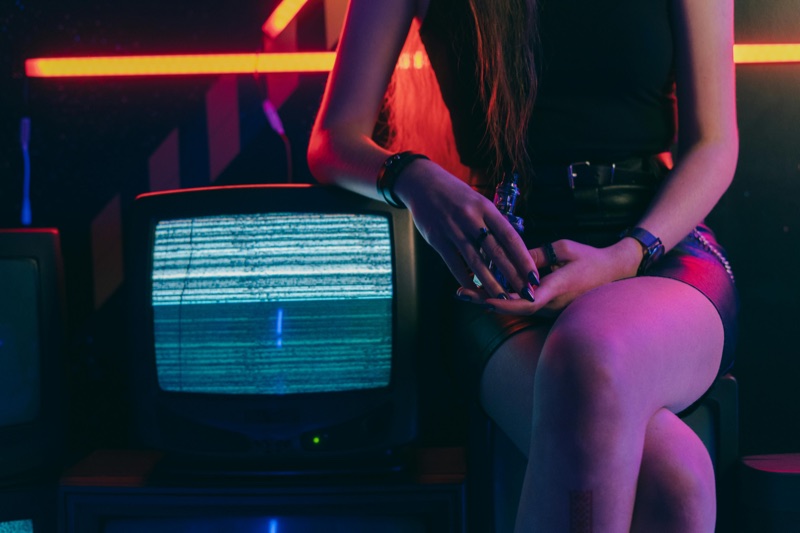
Recently, fashion photos have started to look a little old. It’s intentional, not outdated. grain. neon. That soft analog texture. It’s all back, and honestly? the Anywhere.
The 1980s media aesthetic in fashion photography has emerged across fashion editors, brand campaigns, and even Instagram, with real moments.
But why have everyone suddenly reached their shoulder pads and magnetic tapes for a decade? Let’s take a closer look at 1980s fashion.
What defined the aesthetics of media in the 1980s?
Before it became a creative reference point, the media in the 1980s was how things looked. Visual noise, color bleeding and excessive exposure were all byproducts of analog technology at the time. But all these habits ultimately shaped the distinct aesthetic that today’s creatives are intentionally trying to replicate.
It was also a decade when 80’s pop culture exploded on every channel, from MTV music videos to over the top magazine layouts.
Whether it’s a perfume ad or a band poster, everything was styled to get attention. The same energy, characterized by fast cuts, collision colours and an excess of unapproval, echoes in today’s fashion photography.
Why do you suddenly make a comeback?
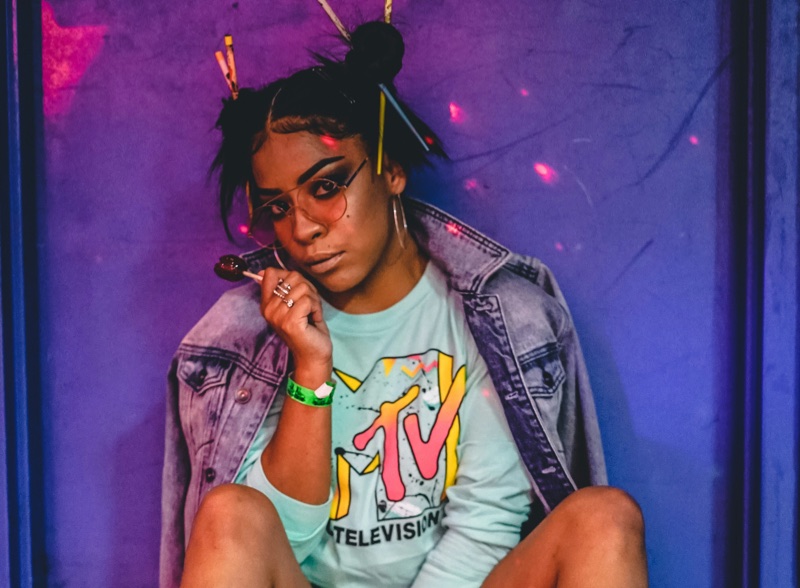
Today, digital culture is vivid, filtered and obsessed. So it makes sense that a creative is reaching for something that feels exactly the opposite. Raw, unpredictable and flawed in the best way.
The rough charm of VHS static or overexposed flashes makes you feel human. It breaks down the digital polish we cultivated.
Some people are drawn to remind them of what they grew up with. In fact, the recent generation posted by GWI shows that around 65% of Gen X members born between 1964 and 1982 feel nostalgic in the 1980s.
As for the younger generation, ZZ and millennials, they find themselves drawn to the aesthetics of the 80s because they feel new and different, like the world they missed but want to experience.
There is also a pull to the touch. Something about grain, blur, and actual lighting feels more intentional than fully lit edits. It gives the image weight. Texture. It seems that you can touch it as well as double tapping.
Caption: Using 1980s media in fashion photography will help Gen Z and Millennials break away from digital perfection
alt. Text: People using old cameras
How retro media appears in today’s fashion photography
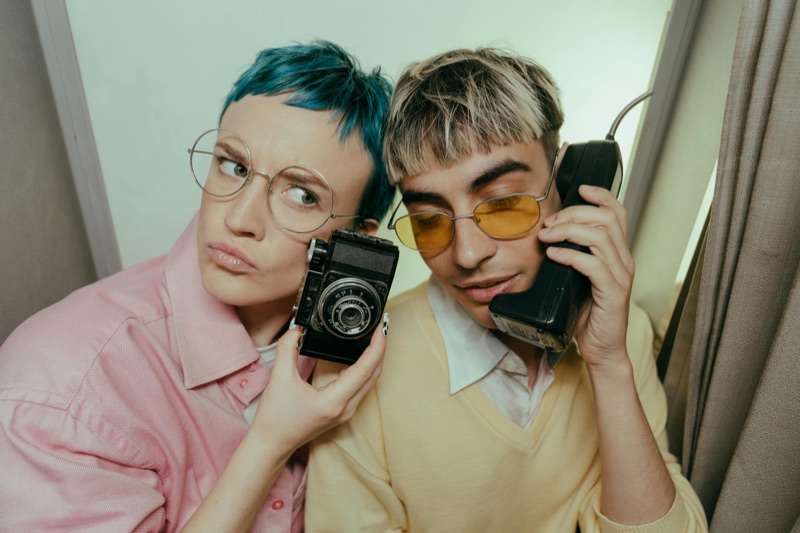
It wasn’t just the atmosphere that came back. A choice of visuals, techniques and styling pulled straight from the 1980s media playbook. Photographers and creative directors lean on aesthetic cues of the times to increase texture, character and attitude in their work.
Let’s break down where it appears most.
VHS Style Filter and Tape Distortion
Does that fuzzy tape grain, glitchy, static, distorted colour make it bleed? It’s everywhere – magazine covers, Instagram Carousels, and even high-end campaigns. Some creatives shoot on real VHS, while others mimic the look with overlays and effects.
Adds a sense of movement, nostalgia and flaws, just as the photos live in memory rather than mood boards.
Lighting, colour and framing throwback
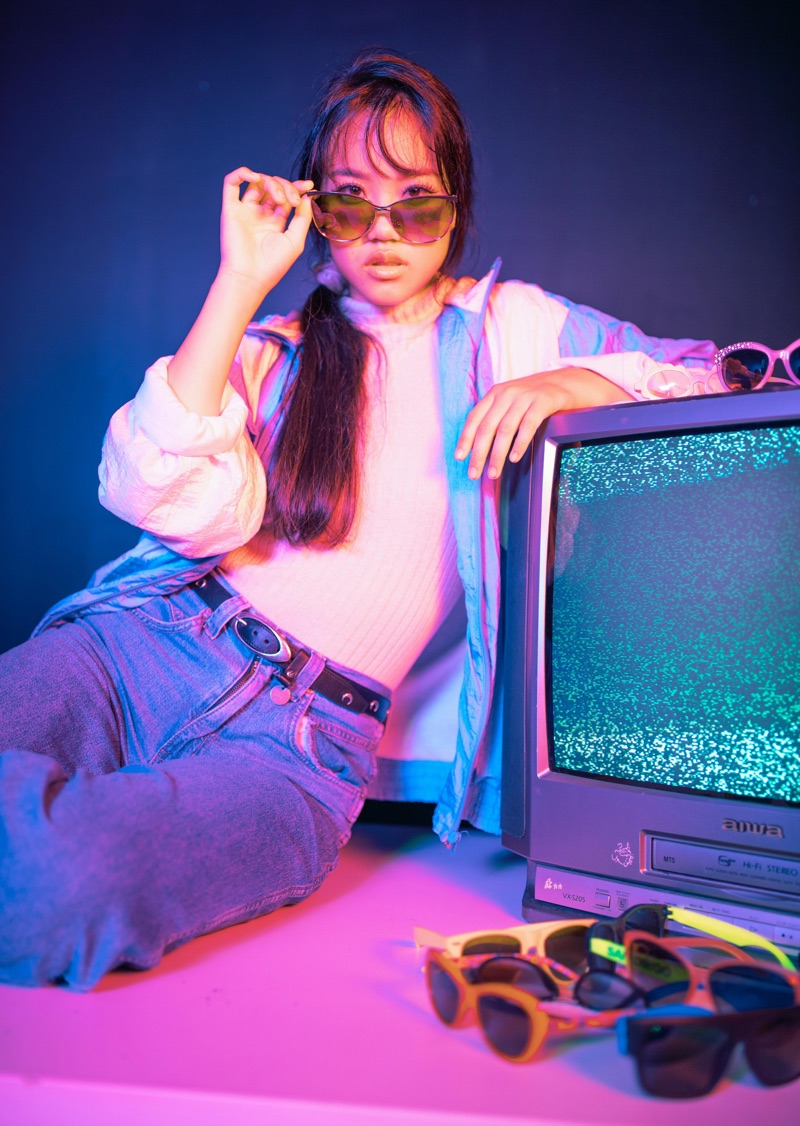
The lighting is even more harsh. The colour is big. And the compositions include “less curated and more spontaneous. Flash photography, direct framing, off-kilters nod to 1980s fashion shoots and tabloid style candidates.
Editorial styling inspired by 10 years
Think bold makeup, feather hair, oversized silhouettes, shiny fabrics, and high-cut bodysuits. Today’s stylists draw visual clues from aerobic tapes, music videos, melodramas and retro catalogs and remake them for the latest lenses.
Popular photographers and campaigns embracing trends

Several top photographers and fashion brands have been creating bold and nostalgic campaigns with 80s style visuals. Their work blends analog textures, vintage lighting and LO-FI effects to bring a distinctly retro mood to modern fashion storytelling.
Gucci X Harmony Korine (Cruise 2020 Campaign)
Filmed by cult filmmaker Harmony Colin, Gucci’s campaign led to pure ’80s energy. The Roman-set visual featured VHS-style blur, oversaturated colours, harsh flash and surreal low-Fi framing, which looked straight from the distorted rental tape. It was intentionally confused and dripped with retro film references.
ID Magazine’s Campbell Addy
British-Ghanaian photographer Campbell Addi often plays with heavy contrasting lighting and grain, nodding to vintage editorial aesthetics.
His 2022 cover shoot idAddy Blended Classic 80s Fashion Reference:
- Thick gem
- Bold eyeshadow
- Composite Texture
There are modern subjects and messages.
Adidas Original Petra Collins
Petra Collins is known for his style covered in dreamy nostalgia, but Adidas’ campaign work brought a more keen VHS aesthetic, including soft lighting gradients, analog noise and fades of colours lifted from home videos in the 1980s.
Marc Jacobs Heaven Lookbook
Marc Jacobs Heaven regularly taps media textures from the 80s and 90s. Their campaign photos often include off-quilter flashes, layered tape effects, and LO-FI styling that reads like a teenage bedroom jean.
Editing work by Tyler Mitchell for Vogue
Best known for his soft, dreamy tones, Tyler Mitchell experimented with analog formats and styling inspired by the 80s. select Trendy Editorial, he plays with a set of colored blocks, exaggerated poses and vintage lighting reminiscent of ’80s high fashion covers.
Dazed Magazine Editorials
Dazed often features photographers leaning against the retrotech aesthetic. Editorials from contributors such as Thurstan Redding and Hanna Moon incorporate film grain, flat lighting, overexposure, and prominent contrast.
The future of the past
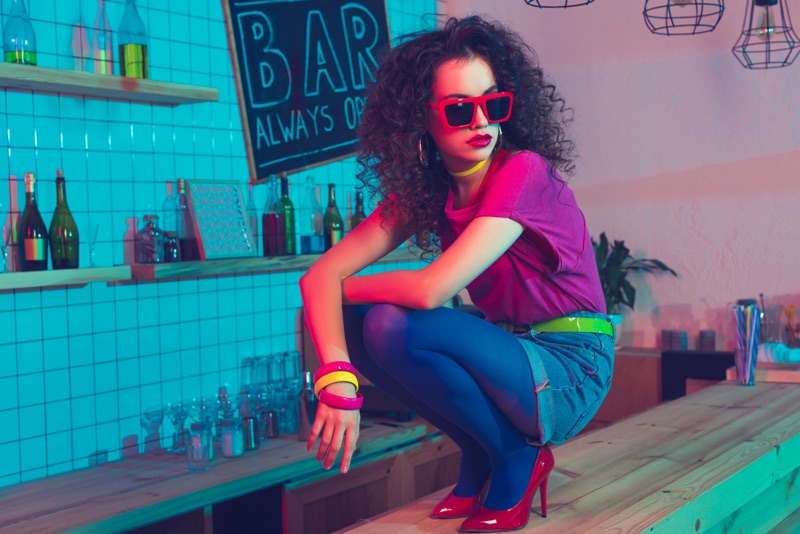
Fashion has always been borrowed from the past, but this time it goes beyond clothing. A 1980s media comeback in fashion photography shows that visual texture, mood and imperfections can carry as much weight as styling and design.
What we’re looking at now is not copying a decade, but reviving energy and turning analog glitches, hard flashes and over-the-top colors into storytelling tools.
Whether it’s a major brand campaign or an experimental shoot on VHS, the ’80s fashion aesthetic goes nowhere. It has been reworked through the current lens, reimagined, and renewed again. That grainy, blown away future looks pretty good.







